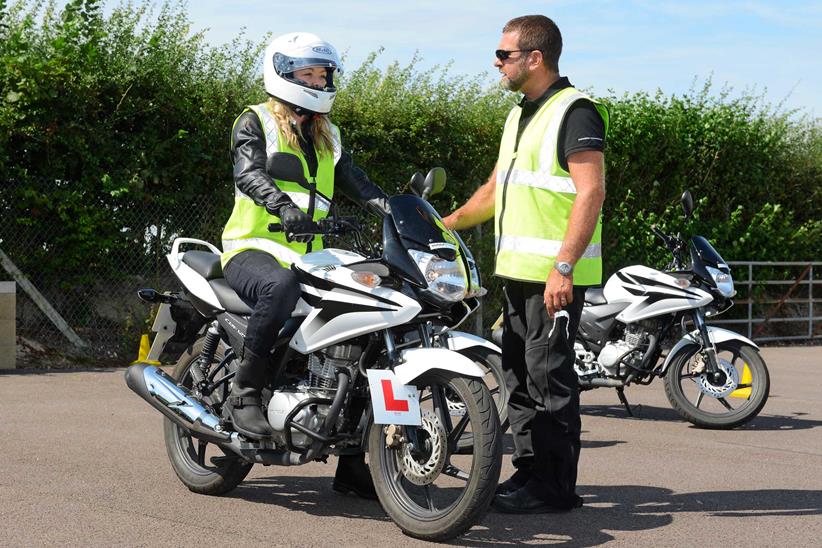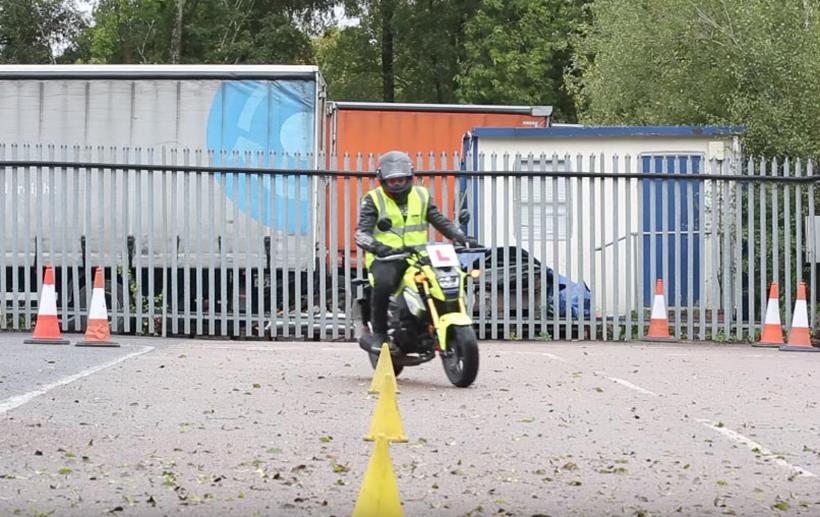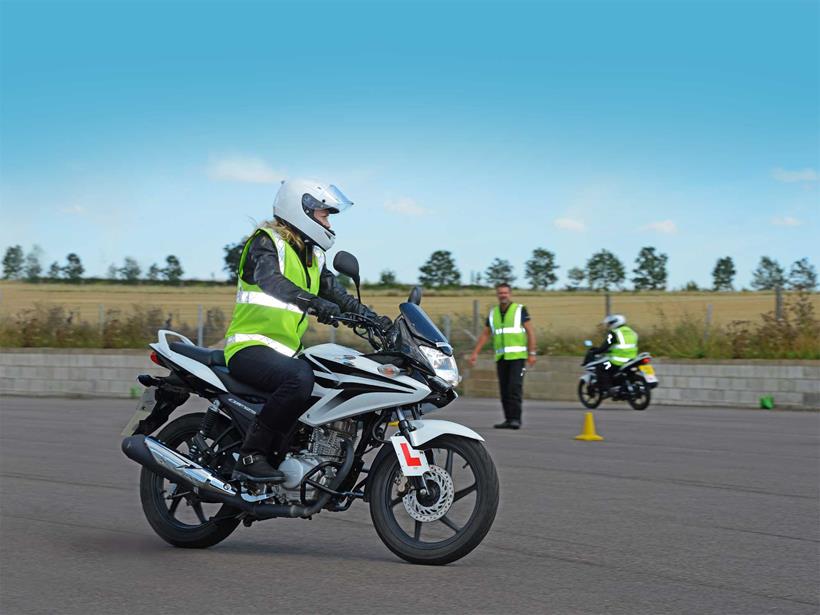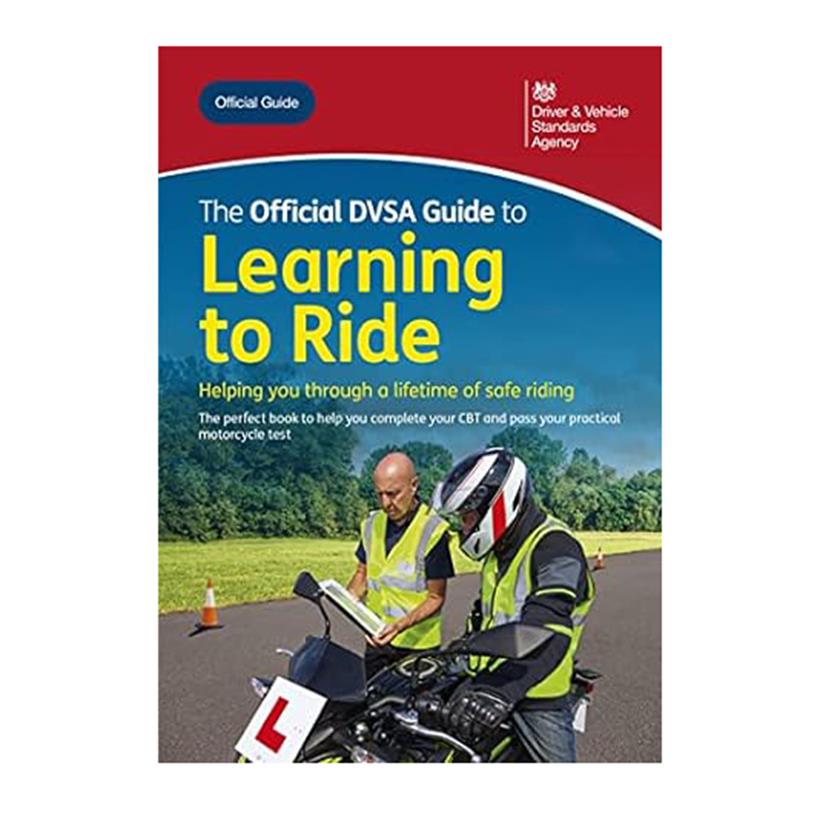How to pass your CBT and ride a motorbike on L-plates

If you’ve decided you want to learn to ride a motorbike, the first thing you’ll need to do is complete a Compulsory Basic Training, or CBT course. It may be a small step down from your dreams of exploring the open road on a big sportsbike or cruiser, but everyone has to start somewhere.
We’d suggest, once you’ve read this article, you should start with this book:
It’s not a CBT test…
While many describe it as a test, it’s better viewed as a certificate of competence to ride a powered two-wheeler, be that a motorcycle or scooter. Riding schools report that the word ‘test’ makes people overly nervous about an activity that should be, and is, a lot of fun. Don’t approach it like an exam you can fail, but more of a lesson in how biking works.
The CBT is a mandatory requirement for nearly all new riders and, as the name suggests, will give you the basic level of experience needed in order to ride a motorcycle on the road.
Whether you want to ride a cost-effective scooter through the traffic to work, get your first taste of automotive freedom at 16 or be able to ride a bigger machine eventually, the CBT is your first port of call.
What is a CBT and what’s involved?
Assuming you are starting from the very beginning, you will be taught everything from the highway code, to wheeling the machine around and using the stands, through to riding safely on the road. It’s possible to do the test in a few hours if you’ve got experience, but most training centres will offer a day-long CBT to ensure you’ve got the necessary skills.
A training school instructor will assess you throughout the day and if everything goes as planned you will be signed off as safe to ride a moped or small motorbike depending on your age. You’ll be given a CBT certificate at the end of the course, should you succeed, and ideally this should be taken with you when you ride your bike on the road just in case you’re asked to prove you’ve done the training.
All test centres are slightly different, but the day will generally follow this basic structure. First of all, you’ll head inside the test centre for some paperwork and for the trainer to check your provisional licence. You’ll then go through some theoretical training and discuss things like what items of riding kit are compulsory or recommended.

After this, you’ll normally head into the carpark or a nearby open space to put the theory into practice. Good trainers will go at the pace of the least experienced rider, so don’t worry about holding others back if you’re completely new to biking.
Finally, once the instructor is happy that everyone has mastered the basics of vehicle control, you’ll head out onto the public road, usually in a small group. You’ll probably be given a radio earpiece that will allow the instructor to give you instructions, which you must follow in a safe and controlled manner.
Assuming everything goes to plan, that’s all you need to get your CBT certificate signed off.
Watch: MCN’s guide to passing the CBT
How long does a CBT last?
Your CBT will last two years and then needs to be retaken unless you pass your full bike test in that time.
What can I ride on a CBT?
From 16 years old you can ride a moped with L-plates once you have passed your CBT. A moped is a bike or scooter with an engine capacity up to 50cc. Find the best 50cc scooter and mopeds here.

Once you’re aged 17 or over, a CBT allows you to ride a motorcycle up to 125cc and with a power output of up to 11kW (14.7bhp) on L-plates. Get MCN’s pick of the best 125cc motorbikes here.
How much is a CBT?
The price of a CBT varies geographically and depends on whether you use your own bike or hire one but will start at around £120. In most cases, this will also cover the cost of all protective gear hire, too.
FAQs
-
Can I ride a 125 without a CBT?
No, if you want to ride a 125cc motorcycle in the UK you will need to take a CBT and you will need to display L-plates. If you passed your car test before February 1, 2001 then you can ride a moped without a CBT, but not a 125.
-
What do I need to take my CBT?
You just need to be 16 or over and have a current, valid provisional driving licence or a full car licence (check the back for provisional A entitlement).
-
Do you need a provisional licence to take your CBT?
Yes, you cannot take a CBT without having a provisional driving licence but they are easy to obtain by filling out a form online at the DVLA website or by visiting a Post Office. A full car driving licence can also be used, just check the back for provisional A entitlement.
-
Is CBT hard to pass?
A CBT provides basic motorcycle training and is therefore aimed at inexperienced riders who are new to biking. It's also not a pass/fail test, you are simply signed off as having completed it at the end or advised that further training will be necessary.
-
What are the next steps after the CBT?
After your CBT you can ride a 125 on L-plates (or moped if you're 16). If you wish, and you're 17 or older you can take an A1 test which allows you to take off the L-plates, carry a pillion and ride on a motorway. From 19 you can take an A2 test which allows you to ride bigger bikes and from 24 (or two years after you pass your A2) you can take a full A licence test.




